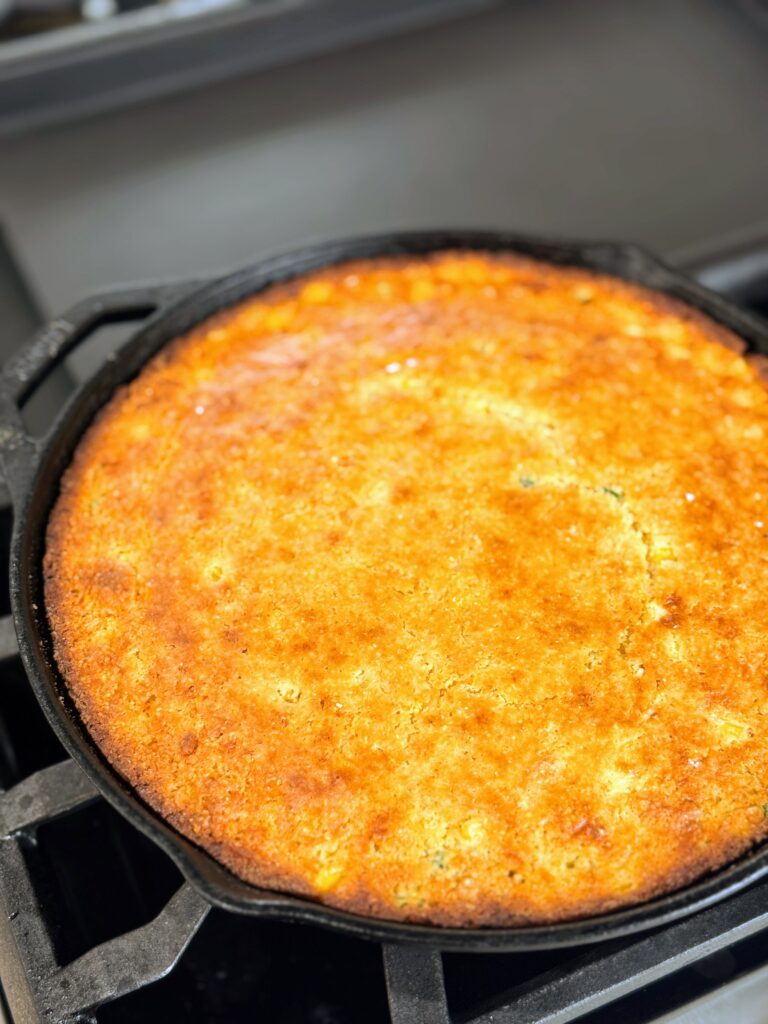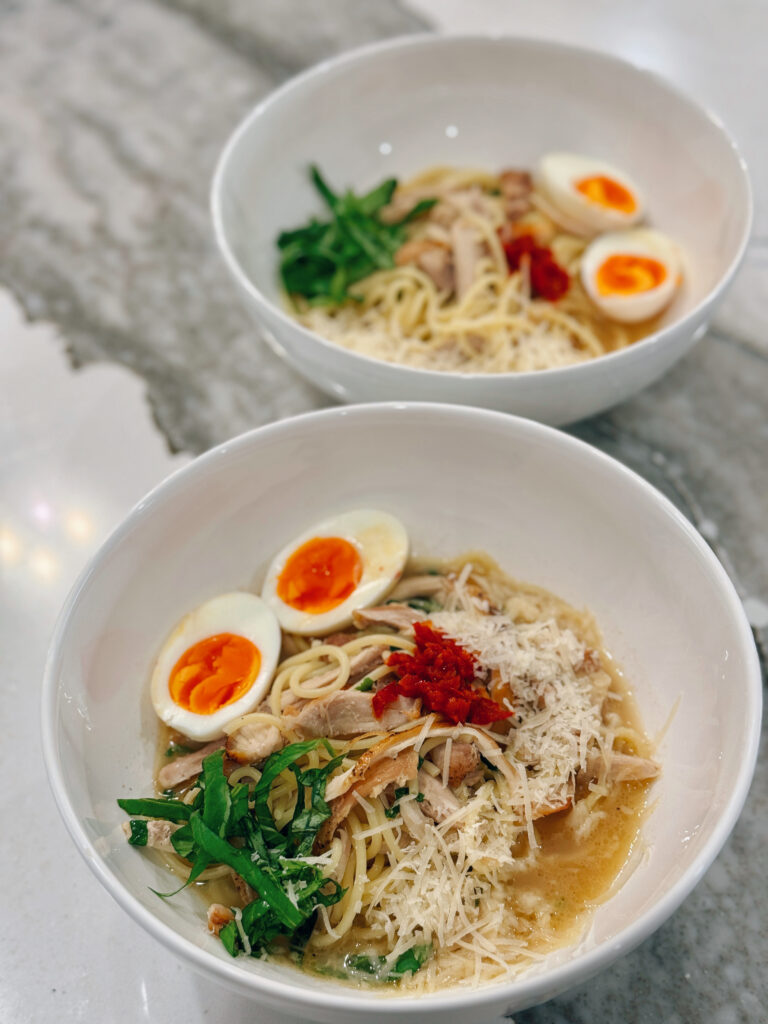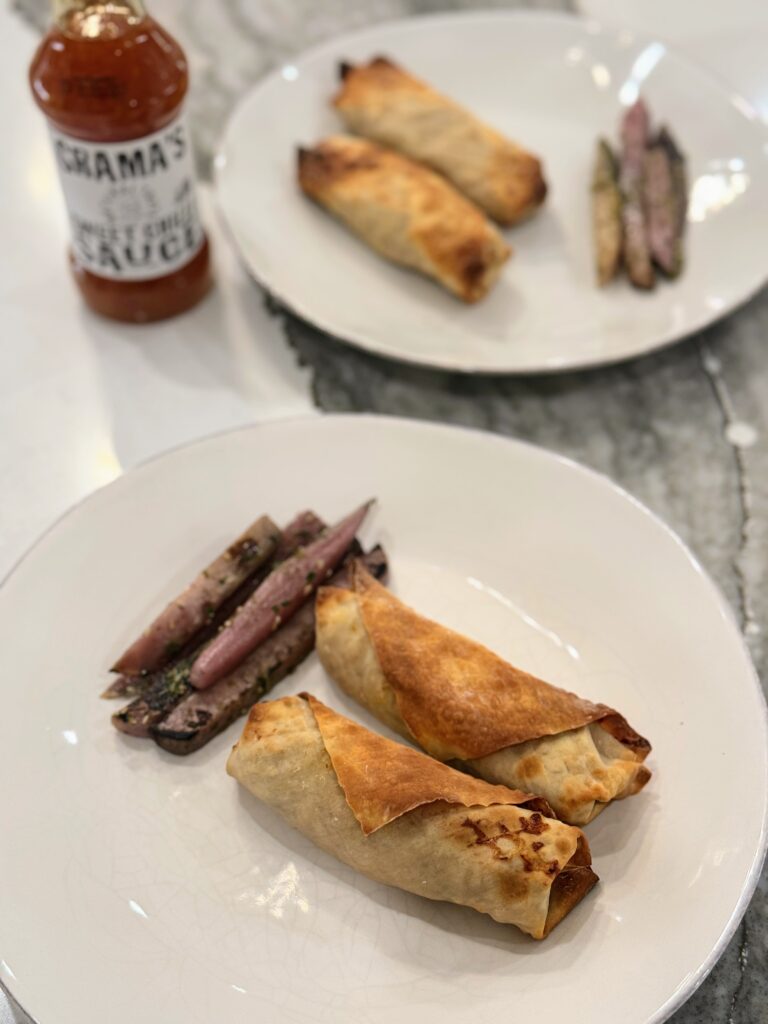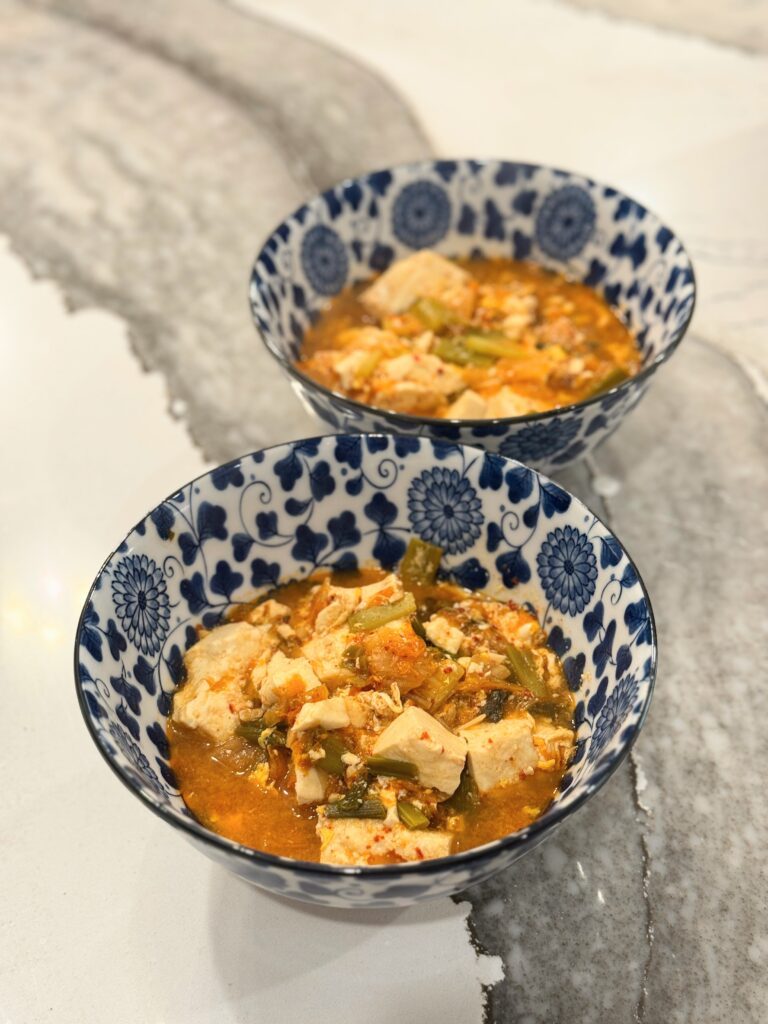I’m not a baker. Despite my best attempts, I can’t seem to produce consistent results when it comes to anything doughy, with rare exception. Thankfully, this cornbread is one of those rare exceptions. Gone are the days of dry, cardboard-y cornbread. This has a moist crumb, a touch of sweetness, and a hint of heat thanks to the jalapeno.

Ingredients:
- 1 tablespoon butter, plus 1/2 cup butter, melted
- 2 cups flour
- 1 cup yellow cornmeal
- 1/2 cup sugar
- 2 1/2 teaspoons baking powder
- 1 teaspoon salt
- 2 cups milk
- 8 ounces aged cheddar cheese, shredded (about 2 cups)
- 1 cup fresh or thawed frozen corn kernels (from 2 ears)
- 1 small jalapeno, chopped
- 2 eggs, beaten
- Preheat oven to 375F degrees. Heat a 10 or 12-inch cast-iron skillet over medium. Add butter, and swirl pan until butter is melted and bottom and sides of skillet are coated. Remove from heat and set aside.
- Whisk together flour, cornmeal, sugar, baking powder, and salt in a medium bowl. Make a well in center of dry ingredients; add milk, cheddar, corn, melted butter, jalapeno, and eggs. Mix until batter is just combined. (Make sure not to overmix.) Pour batter into prepared skillet, and spread evenly. Bake in preheated oven until cornbread is light brown on top and a wooden pick inserted in center comes out clean, 40 to 45 minutes. Let cool 5 minutes.
- Cut cornbread into slices and serve with softened butter, if desired.




